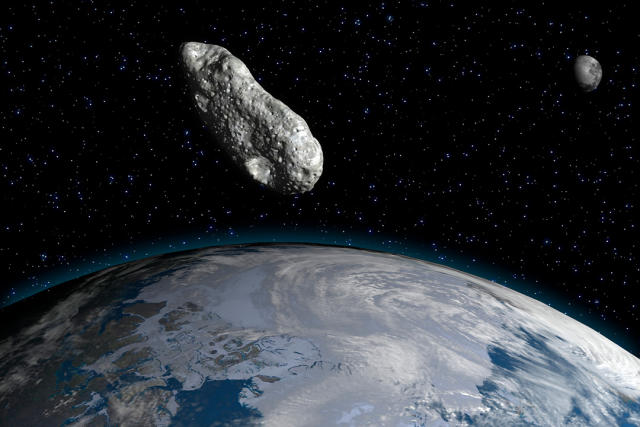Wow! Earth is About to Capture a New Moon in its Orbit
Asteroid 2024 PT5 will become Earth’s “Mini Moon” for 56 days, from September 29 to November 25, 2024. Discovered by the Atlas telescope in South Africa in August, PT5 is about 10 meters (33 feet) in diameter, which is small enough to attract the attention of scientists.
PT5 belongs to the Arjuna group, which includes asteroids with orbits similar to Earth, making it possible for them to be pulled into a temporary orbit by the planet’s gravity. When PT5 approaches Earth, if its speed and orbit are adjusted correctly, Earth’s gravity will dominate, and PT5 will begin to orbit us for a short period of time. This process occurs when the asteroid moves into a certain area of space near Earth.
The PT5 Mini Moon event is a valuable opportunity to study how asteroids interact with the planet’s gravity. This is important in the context of studying the threat posed by larger asteroids that could collide with Earth. Currently, researchers are tracking around 11,000 potentially hazardous asteroids, with an estimated 25,000 lurking undiscovered.

Additionally, the event could help solve the mystery of Mars’ two moons, Phobos and Deimos. Scientists have suspected that they could be captured asteroids due to their similarity in shape and surface to main-belt asteroids.
However, both moons have nearly circular orbits, which raises the question of whether they were once independent asteroids.
During PT5’s close proximity to Earth, another notable astronomical event is comet C/2023 A3 Atlas. The comet, discovered in January 2023 while still between the orbits of Jupiter and Saturn, is expected to make its closest approach to the Sun on September 27 and make its closest approach to Earth on October 12.
Astronomers have predicted that the comet could become extremely bright, reaching magnitude -4 on October 9, thanks to a phenomenon called “forward scattering.” This means that C/2023 A3 Atlas will outshine all other stars and planets in the October sky, making it a great opportunity for astronomy enthusiasts to observe.
Astronomers have produced instructional videos to help people learn how to track and observe the comet, while PT5 will remain a lesser-known phenomenon due to its size and brightness.









